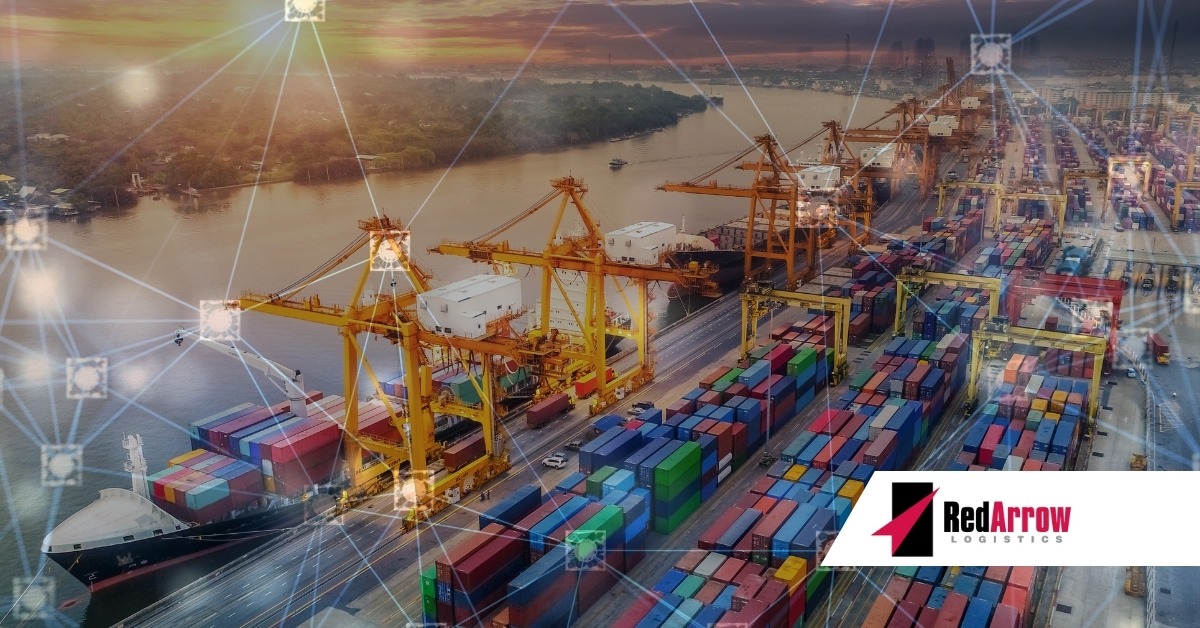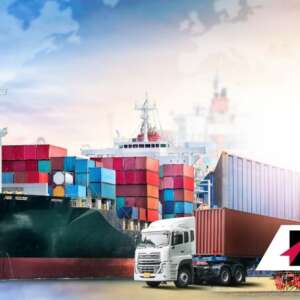The year 2021 was all about supply chain shortages, especially during this past holiday season. Visit any retailer or grocery store and chances are, they were out of something. Computer chips, electric vehicle batteries, and restaurant food supplies are just some of the items that consumers were concerned about. For most of the year, shelves were more sparse than normal and while some shortages were short-lived, others have lingered into 2022.
Supply Chains Under Pressure
The journey of a good from raw material to final destination has become increasingly complex. While modern supply chain management has improved the overall performance of companies, creating faster turnaround and delivery time frames, it has also presented new challenges for global supply chains, which have been repeatedly tested over the last two years with COVID-19 lockdowns and restrictions.
Significant shifts in supply and demand due to the pandemic created issues for global supply chains. Coupled with an increase in e-commerce demand and staffing and driver shortages, supply chains felt pressure like they have never experienced before. At the same time, the economic environment also placed stress on supply chains. In the UK and Europe, for example, the Brexit issue resulted in even more cross-border checks. Globally, international businesses struggled with exchange rates and staffing shortages. This resulted in disruptions along every link in the supply chain.
Adding to the complexity is the environmental impact of supply chain and logistics that also came into question. As consumers have become more aware of the carbon footprint of the products they purchase, companies need to develop sustainable supply chain practices. The COP26 in November focused heavily on freight and transportation. Business, as it was, is no longer an option if there is to be a sustainable future in the transportation industry.
Uncertainty in the Global Supply Chain
This past year has left many in the industry wondering: How can these complex supply chains best be handled? A reduction in barriers to the movement of products, services, capital, and information across borders has led to this global supply chain yet the uncertainty in the global supply chain will most likely not subside in 2022.
In the upcoming year, new COVID-19 variants would certainly put further strain on labor issues. China’s zero-COVID strategy with tight border restrictions will lead to more shipping delays. Because of these issues, companies have become more focused on supply chain risk management. Businesses need to identify the risks within the network and develop mitigation procedures to counteract them.
Freight and Transportation Costs in 2022
International transportation costs will most likely remain high in 2022. Costs will be affected by an increase in environmentally sustainable practices. Practices such as switching to electric delivery vans and relocating distribution centers to improve accessibility and cut down on shipping time all come with a cost, which will be passed on to the consumer. Innovative practices must be embraced, however, which will change the operations of businesses.
The way for businesses to adapt to these disruptions is by creating short- and long-term strategies and solutions. Consumers will continue to feel the pain of higher prices as companies pass along their logistics and transportation increases. And product shortages will continue in the first half of the year.
Production rates must level with demand, which can be difficult to forecast for the remainder of the year. Potential new COVID-19 variants and issues in China may once again result in people spending more money on goods than vacations and activities out of the house. Supply chains that have good visibility of demand and communication among their supply chain will be at an advantage. Some companies might experience shortages and over-supply challenges throughout this year.
In 2021, companies were forced to make supply chains more resilient by adding capacity, holding inventory, and planning for disruptions. Most likely, supply chain issues will persist throughout most of this year. Supply chain risk management strategies must be put in place to handle the complexity of the global market.
Your Trusted Partner
At Red Arrow Logistics, we provide expertise and white glove customer service with fast-growing, complex, and high-value supply chains. As the next-generation model of logistics companies, we offer tailored transportation and logistics solutions — from single shipments to complex over-dimensional and international orders.
Red Arrow offers the scale and scope of services including air, ocean, and ground transportation to meet the budget and schedule requirements of the largest and smallest companies alike. If we can be of assistance, please email us at info@redarrowlogistics.com or give us a call at 425-747-7914.





